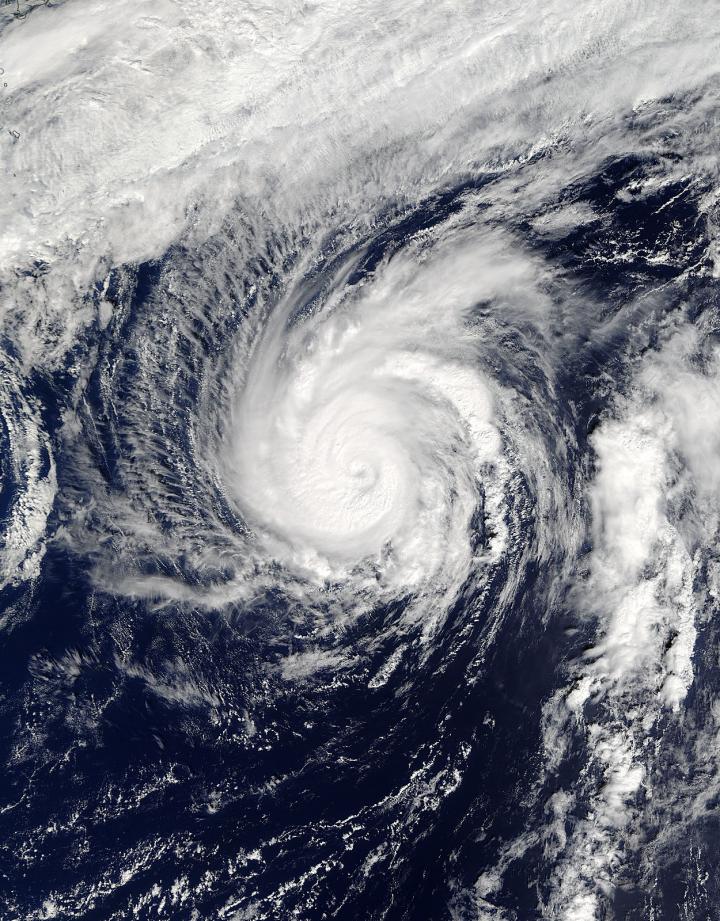NASA apots Typhoon Songda's cloud-filled eye

On Oct. 10 at 8:45 p.m. EDT (Oct. 11 at 00:45 UTC) NASA's Terra satellite saw powerful thunderstorms circling Typhoon Songda's cloud-filled eye. Stronger storms appeared a brighter white than those storms surrounding the center. Credits: NASA Goddard MODIS Rapid Response Team
Tropical storm Songda, the twenty-third tropical cyclone of the northwestern Pacific Ocean formed on Oct. 9. At 5 a.m. EDT (0900 UTC) Songda was located about 488 miles east-southeast of Iwo To island, Japan.
On Oct. 10 at 8:45 p.m. EDT (Oct. 11 at 00:45 UTC) The Moderate Resolution Imaging= Spectroradiometer or MODIS instrument aboard NASA's Terra satellite captured a visible-light image of Songda. MODIS saw powerful thunderstorms circling Typhoon Songda's 20 nautical mile wide, cloud-filled eye. Stronger storms appeared a brighter white than those storms surrounding the center.
On Oct. 11 at 11 a.m. EDT (1500 UTC) Typhoon Songda's maximum sustained winds were near 100 knots (115.1 mph/185.2 kph).
Hurricane-force winds were occurring up to 30 miles from the center, while tropical storm force winds extended just 90 miles. Sondga is a compact storm.
It was located far from land areas and about 538 nautical miles southeast of Yokosaka, Japan near 29.3 degrees north latitude and 147.6 degrees east longitude. Songda was moving to the northeast at (11.5 mph/18.5 kph).
The Joint Typhoon Warning Center forecast noted increasing vertical wind shear and cooling sea surface temperatures will rapidly erode the system. Songda is forecast to begin weakening and become extra-tropical over the next two days.
Media Contact
All latest news from the category: Earth Sciences
Earth Sciences (also referred to as Geosciences), which deals with basic issues surrounding our planet, plays a vital role in the area of energy and raw materials supply.
Earth Sciences comprises subjects such as geology, geography, geological informatics, paleontology, mineralogy, petrography, crystallography, geophysics, geodesy, glaciology, cartography, photogrammetry, meteorology and seismology, early-warning systems, earthquake research and polar research.
Newest articles

First-of-its-kind study uses remote sensing to monitor plastic debris in rivers and lakes
Remote sensing creates a cost-effective solution to monitoring plastic pollution. A first-of-its-kind study from researchers at the University of Minnesota Twin Cities shows how remote sensing can help monitor and…

Laser-based artificial neuron mimics nerve cell functions at lightning speed
With a processing speed a billion times faster than nature, chip-based laser neuron could help advance AI tasks such as pattern recognition and sequence prediction. Researchers have developed a laser-based…

Optimising the processing of plastic waste
Just one look in the yellow bin reveals a colourful jumble of different types of plastic. However, the purer and more uniform plastic waste is, the easier it is to…



